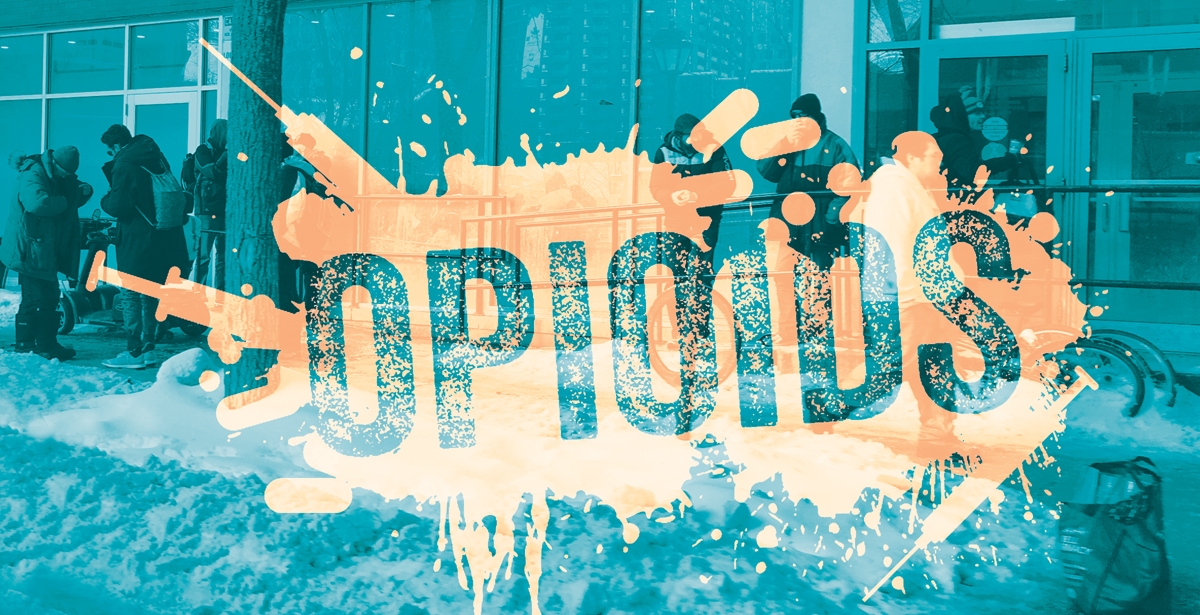
Government Slow to Take Action on Opioid Crisis
The official numbers aren’t out yet, but the number of opioid-related deaths in Canada in 2017 is expected to have surpassed 4,000, reports the Public Health Agency of Canada (PHAC).
This is yet another significant increase in opioid-related deaths, up from a record 2,861 deaths in 2016.
Supervised injection sites are popping up in Ottawa and other major cities, mirroring British Columbia’s mitigation of the crisis that first rose to national attention on the streets of Vancouver. The sharp rise in fatalities is mainly due to fentanyl, a volatile and unpredictable synthetic opioid being cut into a wide variety of street drugs. In 2016, more than half of opioid-related deaths were due to illicit fentanyl, and PHAC reports this number is rising.
Though the sudden climb in deaths can be attributed mainly to fentanyl, health care professionals say the staggering number is making the Canadian public more aware of something that had been brewing under the surface for some time: a mounting long-term crisis of prescribing opioids, coupled with a lack of accessible addiction treatment.
As frontline workers spend their days and nights preventing and responding to overdoses, others are looking to the federal government for leadership and long-term solutions — though it’s unclear what those solutions might be.
In many ways, British Columbia has been at the forefront of the opioid crisis in Canada.
B.C. has been distributing naloxone kits and operating supervised injection sites for far longer than the crisis has been recognized nationally — and the province is also the hardest hit by deaths. New numbers indicate opioid-related deaths eclipsed 1,400 in B.C. in 2017.
Andrew Hendriks, director of health protection with Ottawa Public Health, said that by early 2017, he knew the opioid crisis had begun to take hold in Ontario. He said two deaths in a short time span, coupled with a rise in overdose victims arriving in emergency rooms were the first real indicators that Ottawa’s drug supply was becoming tainted with fentanyl.
“Something was different,” he said. “People were overdosing in the suburbs . . . that really kind of jump-started a conversation at the community level.”
Ottawa Public Health had been providing harm-reduction services such as needle exchanges for nearly 20 years, but after overdoses continued to rise during the summer and public outcry mounted, it opened a supervised injection site in September, and is currently applying to make it permanent.
Frontline workers across Ottawa — pharmacists, social workers, and others who work with the city’s most at-risk communities — say the same thing: In early 2017, something changed for the worse, and the problem has been growing ever since.
Anne Marie Hopkins, a social worker with Shepherds of Good Hope, said that in early February, two long-term members of the shelter died of overdoses during one weekend.
The numbers only increased — in the shelter, in the ByWard Market, people were overdosing in never-before-seen numbers, which she attributed to the arrival of fentanyl.
“It’s not the amount that people are doing, it’s the drug supply,” she said. “Initially we were just scrambling to keep our patients alive.”
By this past September, the shelter was responding to between 50 and 100 overdose situations a day, which Hopkins said came in clusters due to the unpredictability of the drug supply. Eventually the organization opened a trailer supervised injection site in its parking lot.
Hopkins spends her work day following up on incident reports and connecting people to additional services. When we spoke, she described herself and her team as being particularly “on edge.” Cheque Day was just around the corner — the monthly arrival of government support money that almost immediately translates into an escalation in overdose numbers across the city.
Workers at the trailer try to refer users to other facilities across the city.
Every Tuesday and Thursday, a peer worker will take people who want to get on opioid replacements to Recovery Ottawa or Respect Rx Pharmacy.
“We have a number of people who we serve every day who are in the deepest, darkest places of their addiction,” Hopkins said. “They need opportunities to be able to stabilize themselves.”
Mark Barnes, the owner of Respect Rx Pharmacy in Vanier, has been training groups to use naloxone kits since 2016. As part of his training, he talked about the history of the opioid crisis and the wide range of people who are at risk of overdoses.
“My approach to the whole training is from a compassionate standpoint,” he said.
For Barnes, it’s important the public understands that addiction is a mental health issue, one which he says has not been treated like other public health issues due to preconceived notions about addiction. Like many, he partially attributes the crisis to the high rate of opioid prescriptions in Canada and a lack of support for people once their prescriptions end.
“We need to have a better understand-ing about who’s at high risk when we’re prescribing opioids,” he said. “I do believe that addiction is a mental health disorder. It’s not a character flaw.”
It’s this misunderstanding of addiction that Dr. Mark Ujjainwalla sees as the primary barrier to properly treating people who are addicted to opioids. Ujjainwalla founded Recovery Ottawa, a clinic that treats opioid withdrawal using methadone and suboxone. He is against supervised injection sites, saying they allow federal and provincial governments to ignore mental health issues causing and exacerbating the opioid crisis.
“It’s a mental condition, but it’s being treated as sort of an incurable choice,” Ujjainwalla said. “There’s a lack of recognition that addiction is a mental disorder.”
At Recovery Ottawa, withdrawal treatment is covered by provincial healthcare. However, Ujjainwalla explained: “It is not treatment. It is short-term transition, theoretically, but it’s the best we can do.”
Long-term solutions, he said, should include counselling and other services that work to lessen the different factors that can lead to addiction – but these are services that are often not covered by healthcare.
Ujjainwalla said he thinks government should be building full treatment centres instead of only funding short-term services like supervised injection sites. He believes doctors need to be educated on responsible prescription of opioids.
“What I’d rather hear is that we’re developing a collaborative approach,” he said, “a comprehensive treatment facility that addresses the appropriate and evidence-based management of addiction and mental health.”
Recovery Ottawa does receive referrals from supervised injection sites, as does Respect Rx Pharmacy. Workers at the sites are sometimes able to connect users to programs and case workers that can eventually lead to treatment, Hopkins said.
Workers in the trailer can build relationships with frequent clients in the hopes of helping them in more ways. “Since we’ve opened the trailer . . . the amount of referrals that we’ve been able to give to other services has gone up,” Hopkins said.
Funding for both supervised injection sites and longer-term solutions takes time to procure. Federal health critic Don Davis has publicly called on government to declare a public health emergency (like British Columbia), with the hopes of allowing funding to flow more freely.
“A declaration is a sign of leadership,” Davies said. “It’s an indicator of how the federal government regards the current crisis, and as long as they refuse (to) call this a national health emergency, then clearly it isn’t one in their eyes.” Davies said he thinks government has yet to make this declaration because it is “taking a stigmatized approach” to the crisis.
“They’re still viewing addiction in a judgemental way,” he said. Davies added he thinks the crisis stems from a lack of funding for pain management and treatment. He points to the marketing by companies of opioids for all types of pain as a factor.
“Lots of Canadians have become addicted, and so pulling them off the opioids is actually very problematic as well because you leave them with very little options,” he said. “I think that criminalization, stigmatization and repression simply drive it underground.”
The Emergency Act would also legitimize unsanctioned supervised injection sites, such as the ones set up by Overdose Prevention Ottawa which closed in October after being open less than three months. James Hutt, a community organizer, said they opened the site “simply because there was nothing else.”
“We looked around and we saw complete inaction at every level of government,” he said. The city remained “staunchly opposed” to the site, which closed after Shepherds opened its trailer.
Like Hopkins, Hutt said community workers would try to get people connected to other resources. However, the lack of space and services made it hard to do more than just preventing and dealing with overdoses, he said.
Barnes added that more understanding is key to moving forward — on the part of the government, the healthcare system and the average Canadian.
“There’s really no one-size-fits-all,” he said. “People are still just trying first to keep people alive, and then figure out where to go from there.”








